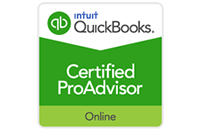There is nothing more challenging than knowing that you have plenty of business but no money. How does a small business get into this situation? Late payments. When your customer takes delivery of a product or service, but doesn’t pay right away, it can complicate your cash flow situation and even endanger your business. And once a client is late once, it can start the downward spiral of being later and later with each payment.
So how do you overcome the vicious late payment cycle? There are a few questions that you can answer – including areas of your business that you can reevaluate – to help get on course to where your clients are paying on time, every time.
How Do Your Clients Pay?
If you use a computerized accounting system such as Quickbooks, chances are good that you have the ability to easily turn an estimate into an invoice, which then gets emailed to your client. You can even activate ACH and credit card payments, which allow your client to process payment for your invoice with a few clicks. If your client also uses Quickbooks, this process is even easier, since their payment information is likely already saved in the system.
So why don’t you? If your clients are still sending a check in the mail, it’s no surprise that it’s taking longer to receive your payments. Giving your clients a convenient option to pay online – as soon as they receive the invoice – can help eliminate the delay between receiving your bill and paying it.
Do You Provide A Deadline?
What kind of terms do you typically offer your clients? If all of your invoices are Net-90, then it’s silly to complain when they haven’t settled the bill within the first 30-40 days. One simple solution is to start clients off with a much shorter payment window – perhaps Net-15 or even Due On Receipt.
Once a client has established a relationship with your business, it’s possible to extend their terms as a courtesy. But don’t let yourself get caught up in giving your clients extensions, or they may start to take advantage of your good will. Following up with your client on the terms of your engagement is an important step to managing your business.
Are There Cash Flow Issues On The Client’s End?
This can be one of the most challenging billing questions you’ll face with any given client – does the customer simply not have the cash to pay your invoice? Short-term and one-time issues aside, if a client has significant cash flow problems and just isn’t able to pay their bills, you have three options as a business owner. You can ignore the issue (definitely not recommended) and let your client pay at will. You can offer discounts or incentives for your client to prioritize your invoice over others. Or you can choose not to do any additional business with the client.
None of these situations is ideal, but neither is spending your time (and money) providing valuable goods and services that you won’t be fairly compensated for. It’s up to you as a business owner to determine how valuable your relationship with a client is when they’re non-compliant with the terms of your engagement. Just remember – they call it the “bottom line” for a reason, and without cash, your business won’t be any better off than theirs.



